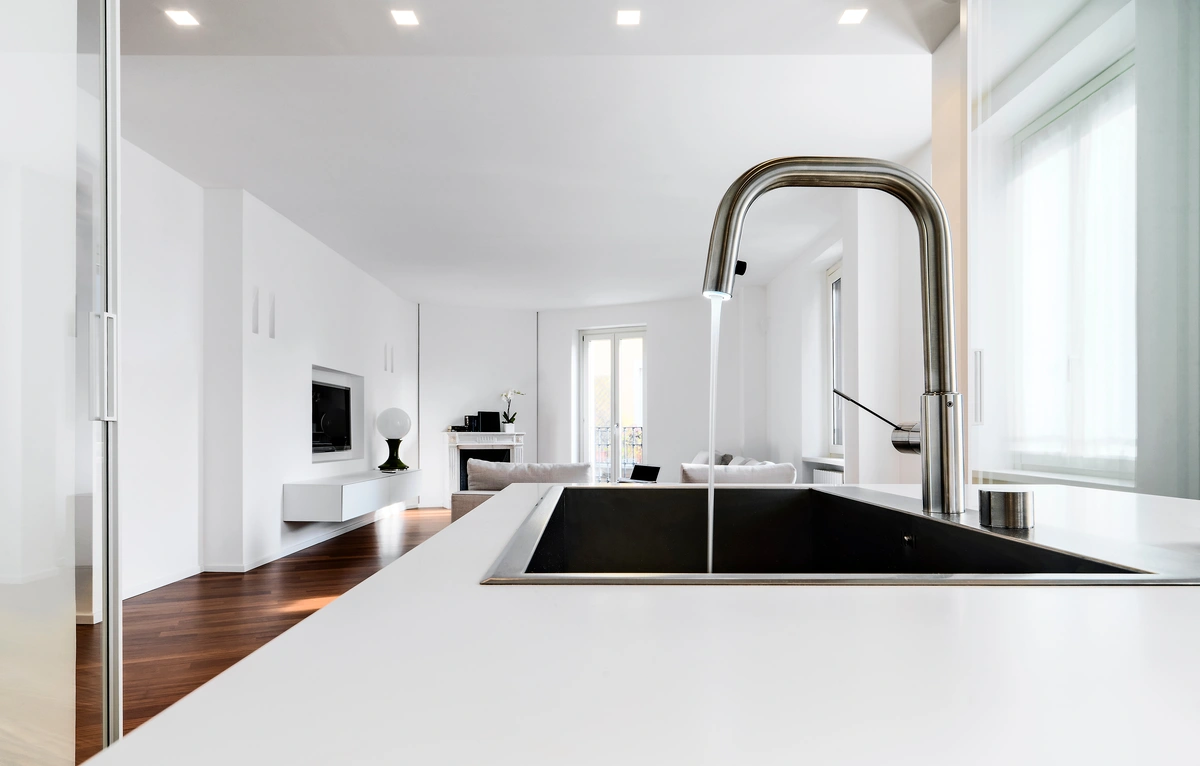If you’re reading this article, you’re probably not a plumber, and you may be wondering how the plumbing in your kitchen works. How does the water come out of the faucet? What are the inner workings of your sink’s plumbing system?
Well, you’ve got questions, and we’ve got answers. In this article, we’ll give you the scoop and provide a kitchen sink plumbing diagram that’ll offer a behind-the-scenes look at your kitchen sink. So, if you’re curious to learn more, check out the article below!
How Does Kitchen Sink Plumbing Work?
The plumbing system in your kitchen sink is responsible for bringing fresh water into your home and removing wastewater. At the heart of your kitchen sink plumbing system is the water supply line.
This line brings clean water into your home from the main water supply. It’s usually made of copper or plastic and is connected to a shut-off valve, which allows you to turn off the water supply to your sink.
From the water supply line, the water flows into the faucet. The faucet has a handle that controls the flow and temperature of the water. When you turn on the faucet, the water travels through the spout and into the sink.
But what happens to the water once it goes down the drain? Well, this is where the drain system comes into play. The drainpipe is connected to the bottom of the sink and carries the disposal water away.
The drain line carries the wastewater out of your home and into the sewer or septic system.
The Inner Workings of a Kitchen Sink Drain
When it comes to sink plumbing, there are several key parts that work together to ensure proper function and drainage. Within your sink drain, you’ll find the following components:
- Strainer
- Strainer body
- Rubber gasket and body
- Locknut
- Tailpiece
- Threaded coupling
- Trap
- Slip joint coupling
- Escutcheon
One essential component of kitchen sink plumbing is the P-trap. It’s a curved pipe that is shaped like the letter “P” or “U” and is located beneath the sink. The purpose of the P-trap is to trap water inside the pipe, creating a barrier that prevents sewer gases from entering the kitchen. It also helps to catch food particles that may accidentally fall down the drain, preventing them from entering the main drain line.
Connected to the P-trap is the tailpiece. The tailpiece connects to the sink drain and provides a direct pathway for wastewater to flow into the P-trap and then into the drain pipe.
Lastly, there is the trap arm, which is a horizontal pipe that connects the P-trap to the main drain line. The trap arm allows water disposal from the sink to flow smoothly into the main sewer line and ultimately out of the house.
The Main Parts of a Kitchen Sink

To further explore the composition of your kitchen sink, let’s take a closer look at the main parts of it:
- Sink bowl: The sink bowl is the main basin of the sink, where you wash dishes and perform other kitchen tasks. It’s typically made of stainless steel, porcelain, or composite materials.
- Faucet: The faucet is where the water comes out. It’s usually mounted on the sink or the countertop behind the sink. Faucets come in a variety of styles and finishes, including single-handle, double-handle, and pull-out or pull-down sprayer options.
- Drainboard: Some sinks have a built-in drainboard, which is a flat surface adjacent to the sink bowl. It provides additional space for drying dishes or preparing food.
- Garbage disposal: Many modern kitchens have a garbage disposal installed in the sink. This device grinds up food scraps into small particles, which can then be safely flushed down the drain.
Kitchen Sink Plumbing Simplified
We hope this article and kitchen sink plumbing diagram helped you understand more about your sink. However, understanding the components of your kitchen sink and knowing how to fix it are two different things.
Therefore, if you’re dealing with leaks or other problems, you should give us a call. At Black Tie Plumbing, we provide a number of plumbing services, as well as sewer and waterline repair.
To inquire more about how we can help you, call 1-888-973-3981, or leave us a message on our website. We’ll be in touch soon!





